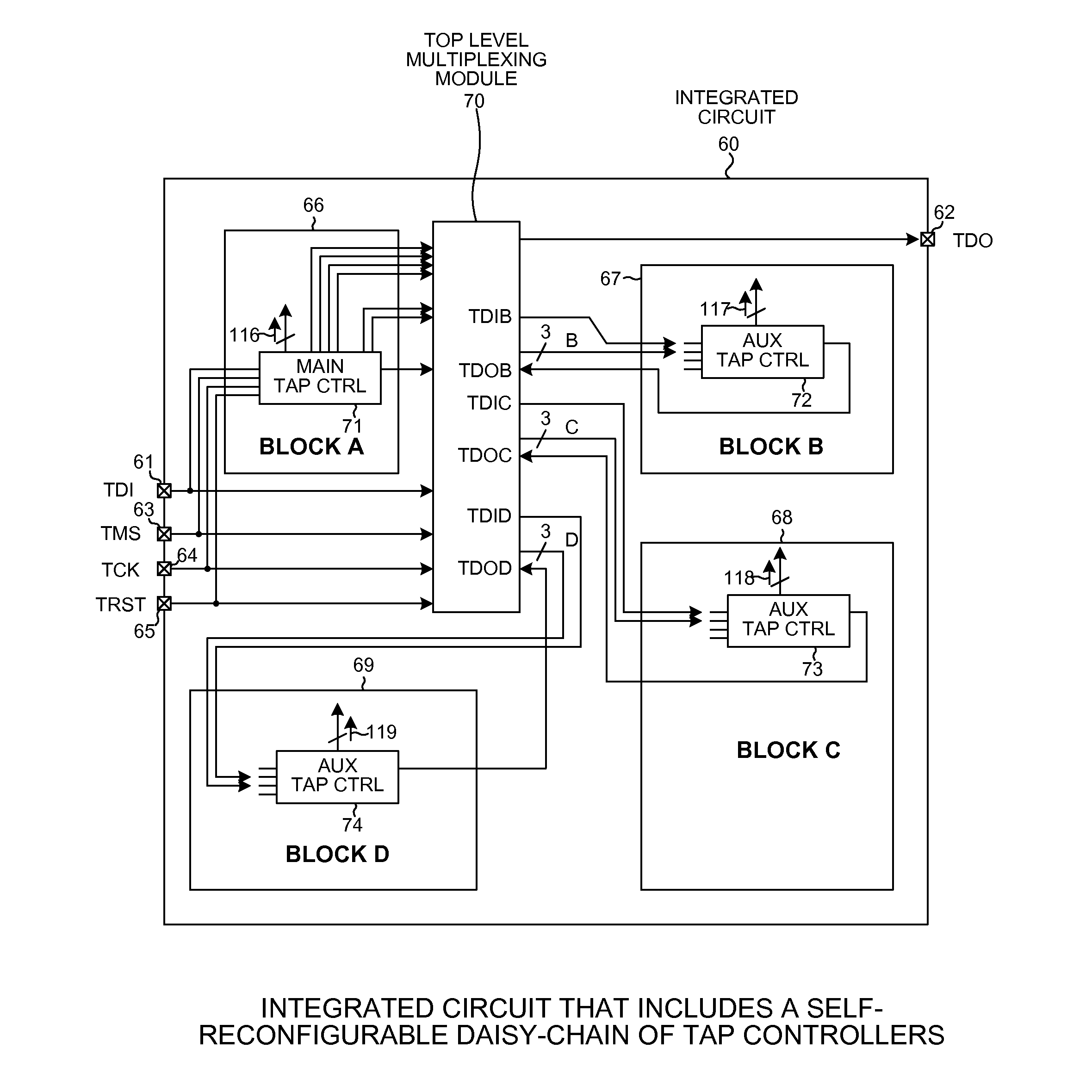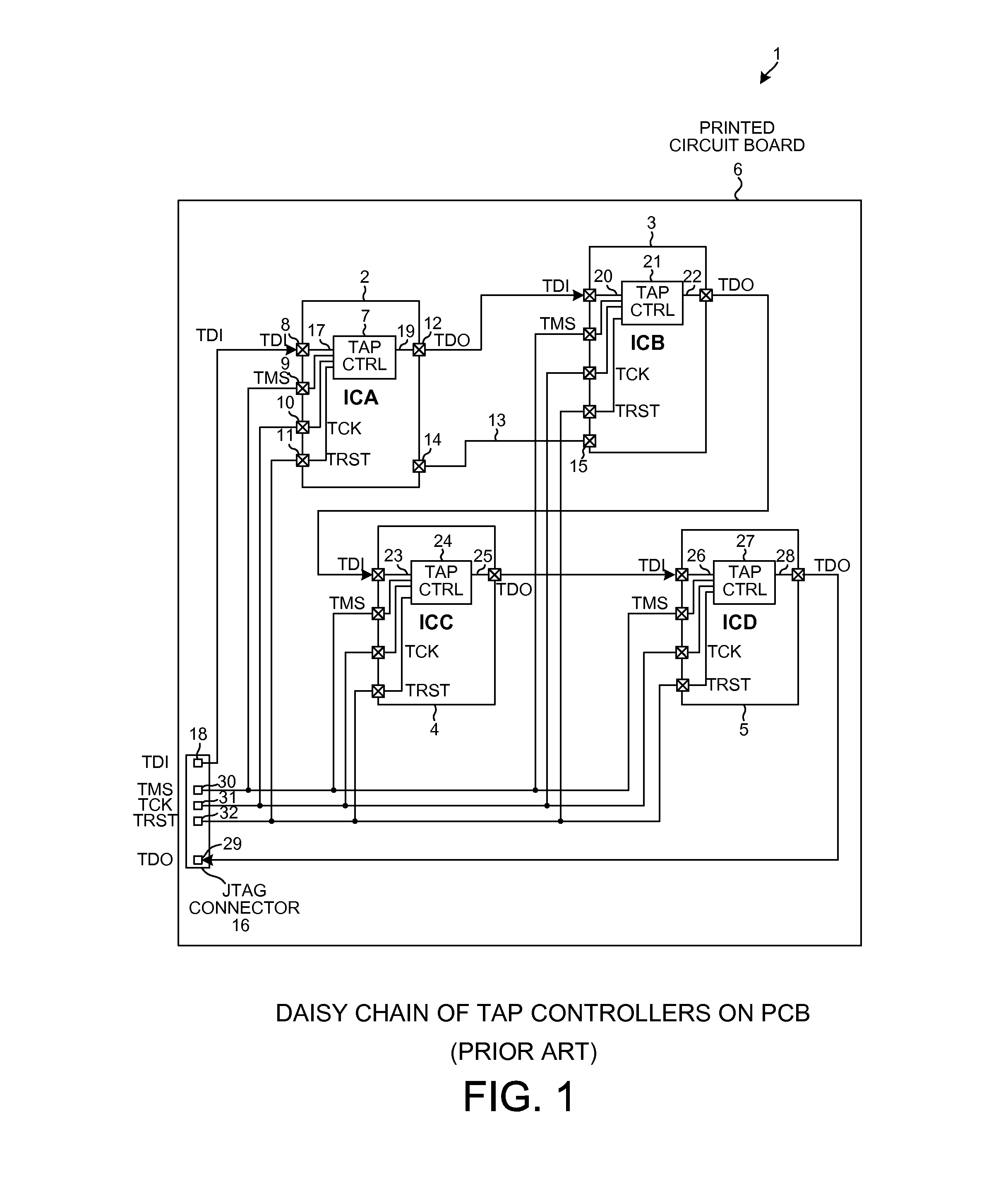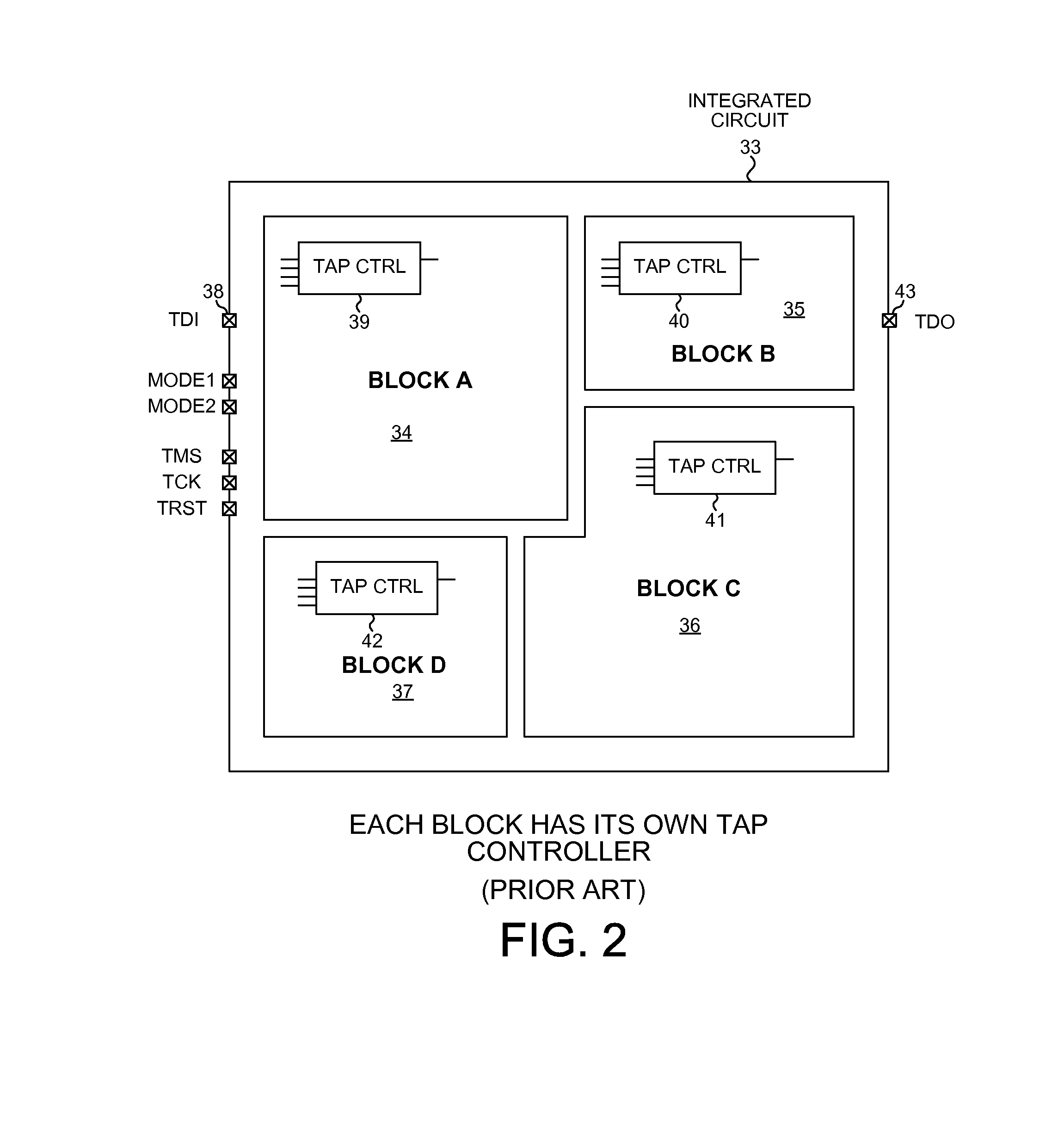Dynamically self-reconfigurable daisy-chain of tap controllers
a technology which is applied in the direction of logical operation testing, instruments, measurement devices, etc., can solve the problems of large integrated circuits of today, large overall amount of time required to test the integrated circuit, and large amount of jtag data and instructions shifting at relatively slow rates, so as to reduce the amount of test time required to rest an integrated circuit.
- Summary
- Abstract
- Description
- Claims
- Application Information
AI Technical Summary
Benefits of technology
Problems solved by technology
Method used
Image
Examples
Embodiment Construction
[0033]FIG. 6 is a diagram of an integrated circuit 60 in accordance with one novel aspect. Integrated circuit 60 includes a TDI terminal 61, a TDO terminal 62, a TMS terminal 63, and TCK terminal 64, a TRST terminal 65, four blocks of circuitry 66-69, and an another block of circuitry referred to here as the Top Level Multiplexing Module (TLMM) 70. Block A 66 includes a TAP controller 71. Block B 67 includes a TAP controller 72. Block C68 includes a TAP controller 73. Block D 69 includes a TAP controller 74. TAP controller A 71 is referred to as the “main” TAP controller, whereas the other TAP controllers 72-74 are referred to as the “auxiliary” TAP controllers. Each of the blocks 66-69 includes, in addition to a TAP controller, other functional circuitry (not shown) that is to be tested by the TAP controller. Each TAP controller has data registers. Arrows 116-119 in FIG. 6 represent data register output signals as output from these data registers within TAP controllers 71-74, respe...
PUM
 Login to view more
Login to view more Abstract
Description
Claims
Application Information
 Login to view more
Login to view more - R&D Engineer
- R&D Manager
- IP Professional
- Industry Leading Data Capabilities
- Powerful AI technology
- Patent DNA Extraction
Browse by: Latest US Patents, China's latest patents, Technical Efficacy Thesaurus, Application Domain, Technology Topic.
© 2024 PatSnap. All rights reserved.Legal|Privacy policy|Modern Slavery Act Transparency Statement|Sitemap



